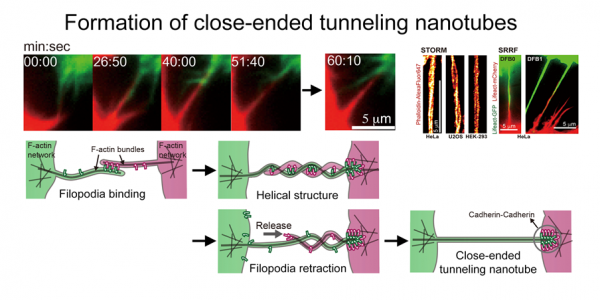[Prof. Jong-Bong Lee, Prof Jae-Hyung Jeon] Formation of cellular close…
- No attach File
관련링크
main text

Caption: Formation mechanism of cellular close-ended tunneling nanotubes
[Prof. Jong-Bong Lee, Prof Jae-Hyung Jeon] Formation of cellular close-ended tunneling nanotubes through mechanical deformation
Membrane nanotubes or tunneling nanotubes (TNTs) that connect cells have been recognized as a previously un-identified pathway for intercellular transport between distant cells. However, it is unknown how this delicate structure, which extends over tens of micrometers and remains robust for hours, is formed. Here, we found that a TNT develops from a double filopodial bridge (DFB) created by the physical contact of two filopodia through helical deformation of the DFB. The transition of a DFB to a close-ended TNT is most likely triggered by disruption of the adhesion of two filopodia by mechanical energy accumulated in a twisted DFB when one of the DFB ends is firmly attached through intercellular cadherin-cadherin interactions. These studies pinpoint the mechanistic questions about TNTs and elucidate a formation mechanism.


-2.gif)









 Login
Login


